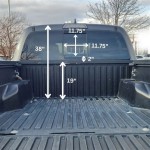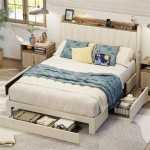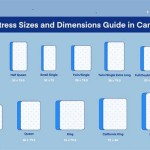Measurements of a King Size Bed Quilt: A Comprehensive Guide
Selecting the correct size quilt for a king size bed is crucial for both aesthetic appeal and ensuring adequate coverage during sleep. The standard measurements for a king size bed quilt are designed to drape appropriately over the sides and end of the mattress, providing warmth and enhancing the overall bedroom decor. Understanding these dimensions and the factors influencing quilt size is essential for a satisfactory purchase.
King size beds are among the largest standard bed sizes available, necessitating appropriately sized bedding. While standard measurements exist, variations may occur based on manufacturer, quilting style, and design preferences. This article provides a detailed overview of standard king size quilt measurements, factors influencing these measurements, and tips for ensuring the perfect fit for individual needs.
Standard King Size Bed and Quilt Dimensions
The dimensions of a king size bed typically measure 76 inches in width and 80 inches in length. This measurement forms the basis for determining the appropriate quilt size. Standard king size quilts are generally designed to be larger than the mattress dimensions to allow for overhang on the sides and foot of the bed. This overhang not only ensures adequate coverage for comfortable sleep but also contributes to the visual appeal of a well-dressed bed.
The commonly accepted standard dimensions for a king size quilt typically range from 108 inches wide by 96 inches long to 110 inches wide by 96 inches long. These measurements provide a sufficient drape over the sides and end of the bed, typically around 16 to 17 inches on each side. The specific dimensions may vary slightly depending on the manufacturer and the intended style of the quilt.
California king size beds, although sometimes mistaken for standard king beds, have different dimensions. A California king bed measures 72 inches wide and 84 inches long. Quilts for California king beds are typically narrower and longer than standard king quilts, often measuring around 102 inches wide by 106 inches long. It is crucial to verify the specific dimensions required based on the actual mattress size to avoid purchasing a quilt that is too large or too small.
Beyond the standard sizes, oversized king quilts are also available. These larger quilts are designed for beds with thicker mattresses or for individuals who prefer a more generous drape. Oversized king quilts often measure 120 inches wide by 120 inches long, providing substantial coverage and a luxurious appearance. Selecting an oversized quilt may be beneficial for beds with elaborate bed frames or for those seeking maximum warmth and comfort.
Factors Influencing Quilt Size Selection
Several factors beyond the standard mattress size can influence the optimal quilt size for a king size bed. These factors include mattress thickness, bed frame design, and personal preferences regarding drape length. Evaluating these elements prior to purchasing a quilt ensures a proper fit and a visually pleasing aesthetic.
Mattress thickness significantly affects the amount of overhang needed for a quilt. Thicker mattresses, particularly those with pillow tops or memory foam layers, require a larger quilt to provide adequate coverage. To determine the necessary overhang, measure the thickness of the mattress from the top surface to the top of the bed frame. This measurement should be added to the desired drape length on each side of the bed to calculate the minimum required width of the quilt.
The design of the bed frame also plays a critical role in determining the appropriate quilt size. Beds with high side rails or footboards may require a larger quilt to ensure sufficient coverage and prevent the mattress from being exposed. In such cases, it is advisable to measure the distance from the top of the mattress to the floor, or the top of the side rail, to determine the necessary drop length. A quilt that is too short may appear disproportionate and fail to provide adequate warmth.
Personal preferences regarding drape length are subjective but equally important. Some individuals prefer a minimal drape that barely covers the sides of the mattress, while others prefer a more substantial overhang that extends closer to the floor. The desired aesthetic should be considered when selecting a quilt size. A longer drape can create a more luxurious and cozy appearance, while a shorter drape may appear more modern and streamlined.
The style of the quilt itself can also influence the perceived size. Quilts with intricate patterns or decorative borders may benefit from a larger size to fully showcase the design. Conversely, simpler, minimalist quilts may appear more balanced with a less pronounced drape. Taking into account the visual impact of the quilt design can contribute to a more cohesive and aesthetically pleasing bedroom decor.
Measuring for the Perfect Fit: A Step-by-Step Guide
Accurate measurement is paramount to selecting a king size quilt that fits perfectly and meets individual needs. This process involves measuring the mattress, considering the bed frame, and factoring in personal preferences for drape length. A systematic approach to measurement can prevent costly mistakes and ensure a satisfactory purchase.
The first step in measuring for a king size quilt is to accurately measure the width and length of the mattress. Use a measuring tape to determine the distances between the edges of the mattress, ensuring the tape is held taut and level. Record these measurements carefully, as they form the basis for calculating the required quilt size. Verify whether the bed is a standard king or a California king, as their dimensions differ.
Next, measure the thickness of the mattress from the top surface to the top of the bed frame or box spring. This measurement is crucial for determining the amount of overhang needed to adequately cover the sides of the bed. For mattresses with pillow tops or additional layers, ensure the measurement is taken at the highest point of the mattress to account for the extra thickness.
Consider the bed frame design and measure the distance from the top of the mattress to the floor, or to the top of any side rails or footboards. This measurement helps determine the minimum required drop length for the quilt. If the bed has a footboard that obstructs the quilt, measure from the top of the mattress to the top of the footboard to ensure the quilt will not be hindered.
Determine the desired drape length based on personal preferences. Consider whether a minimal drape, a standard drape, or a more generous overhang is preferred. Add the desired drape length to both sides and the foot of the bed. For example, if a 15-inch drape is desired on each side of a standard king mattress (76 inches wide), the minimum required quilt width would be 76 inches + 15 inches + 15 inches = 106 inches. Similarly, calculate the required length by adding the desired drape length to the length of the mattress (80 inches).
Finally, compare the calculated measurements with the advertised dimensions of potential quilts. Be aware that slight variations may occur between manufacturers, so it is advisable to confirm the actual dimensions before making a purchase. Consider purchasing a quilt slightly larger than the calculated minimum to allow for shrinkage or slight discrepancies in manufacturing.
By carefully considering these factors and following a systematic measurement process, individuals can confidently select a king size quilt that fits perfectly, provides adequate coverage, and enhances the overall aesthetic of the bedroom.

Duvet Sizes

King Duvet Size Cm

The Guide To Quilt Sizes For Beds

Bed Quilt Sizes

Duvet Size Guide Everything You Need To Know Sleep Journal

Duvet Sizes And Dimensions Guide 2024 Dreamcloud

Sew Many Ways Size Chart For Beds Quilts And Batting

Mattress Sizes Chart

Us Duvet Sizes Quilt

Diy Linen Duvet Cover The Thread








